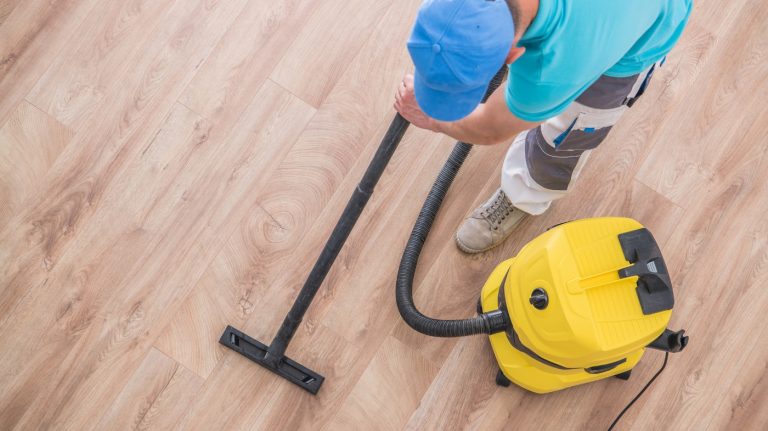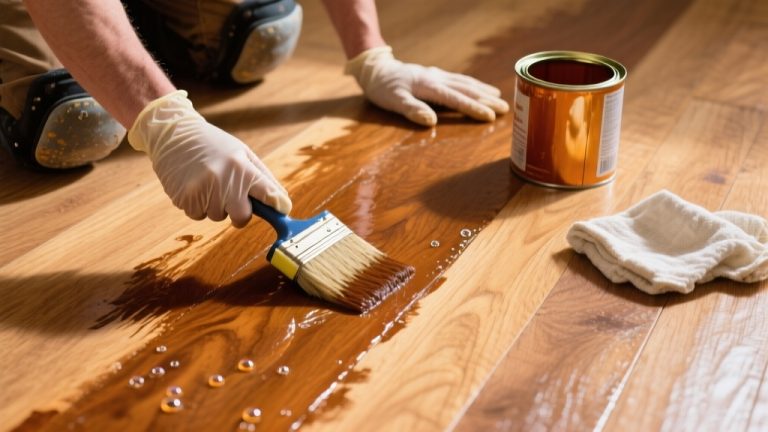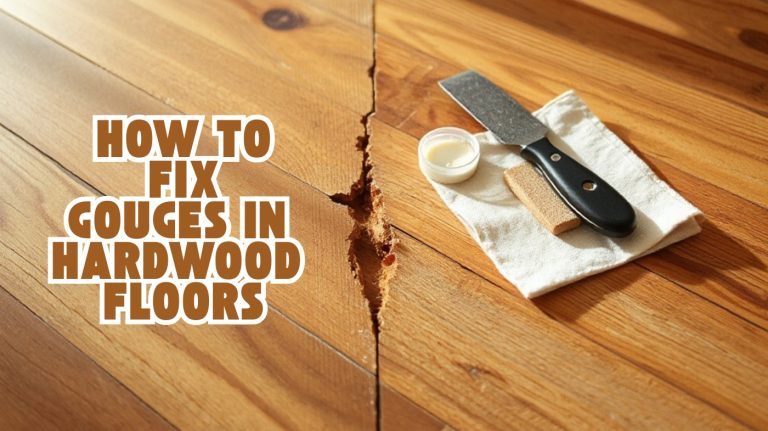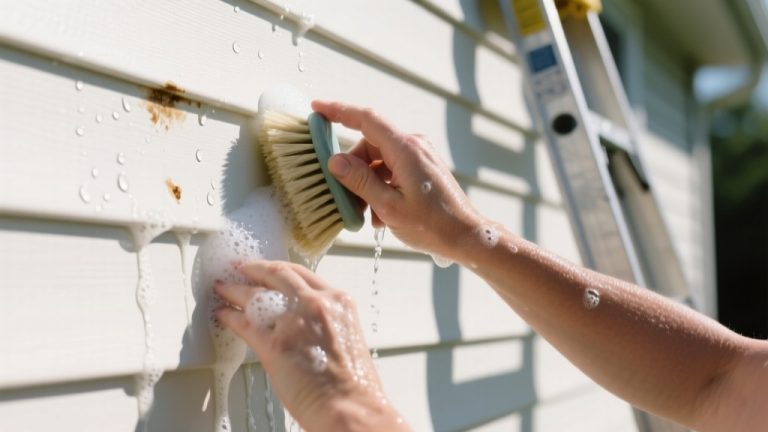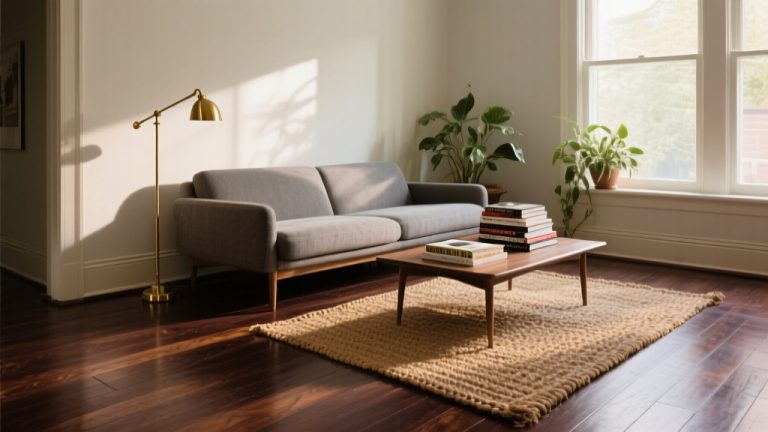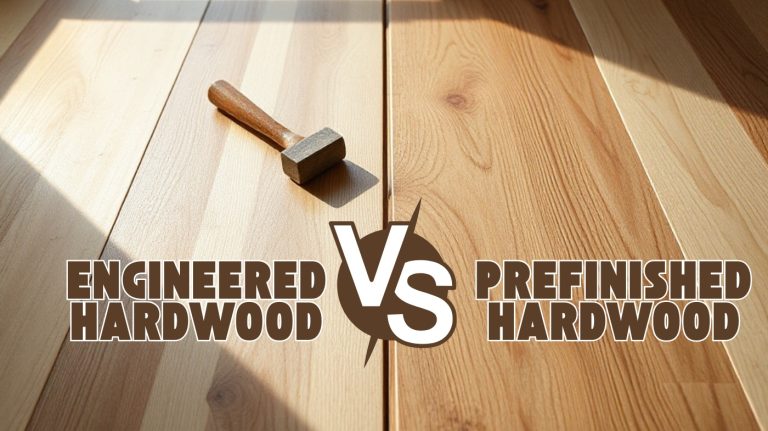How to Waterproof Hardwood Floors: Choose Premium Finishes
To waterproof hardwood floors, choose planks with moisture-resistant cores and real wood veneers treated on all edges. Apply durable finishes like water-based polyurethane or two-component sealers to create a strong moisture barrier.
Install carefully using vapor barriers under subfloors and secure planks with waterproof adhesives and expansion gaps. Maintain floors by promptly wiping spills, controlling humidity, and using gentle cleaners.
Following these steps guarantees lasting protection and performance; understanding installation and care nuances can further enhance durability.
Key Takeaways
- Choose hardwood flooring with waterproof cores and seal all six sides to prevent moisture penetration.
- Apply water-based or oil-based polyurethane finishes in multiple thin coats for durable moisture protection.
- Install vapor barriers beneath subfloors and use tongue-and-groove locking systems with expansion gaps to reduce water damage risks.
- Maintain consistent indoor humidity (35%-55%) and promptly clean spills to preserve waterproofing integrity.
- Regularly inspect and reseal edges, seams, and surface finishes to prevent water infiltration and prolong floor lifespan.
Understanding the Composition of Waterproof Hardwood Floors
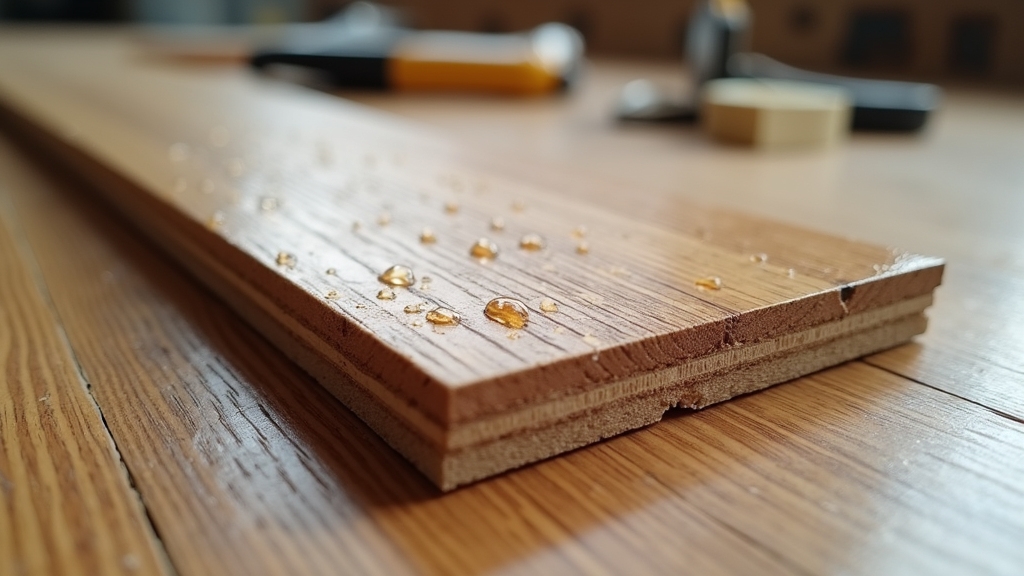
When you examine waterproof hardwood floors, you’ll find they rely on a carefully engineered layered structure combining real hardwood veneers with moisture-resistant core materials.
The top veneer, made from species like oak or maple, offers authentic wood texture. Beneath it, the core usually consists of high-density fiberboard (HDF) or plywood arranged in cross-layered patterns to prevent warping and swelling. Proper maintenance, such as avoiding excess water exposure, is essential to preserve the finish and prevent damage to the wood.
A hardwood veneer atop a cross-layered HDF or plywood core resists warping while showcasing natural wood texture.
Some designs incorporate waterproof cores using vinyl or composite materials, creating effective moisture barriers. These layers often include protective finishes like polyurethane or resin that further enhance water resistance and durability.
All six sides of the planks—top, bottom, edges, and ends—receive waterproof treatments to block water intrusion. Additionally, plank locking systems and moisture-resistant adhesives enhance dimensional stability and prevent seepage.
This layered engineering distinguishes waterproof engineered hardwood from solid hardwood, making it suitable for moisture-prone areas without sacrificing natural wood aesthetics. Following recommended cleaning practices, including moisture control, helps maintain the flooring’s longevity and appearance.
Effective Finishes and Sealants to Enhance Water Resistance
Although waterproof hardwood floors are engineered to resist moisture structurally, applying effective finishes and sealants is essential to enhance their water resistance and longevity.
You should consider water-based polyurethanes like Bona Traffic HD or Loba EasyFinish for a hard, clear coating that dries quickly, resists yellowing, and maintains natural wood tones with low VOC emissions.
Modern water-based formulas have advanced chemically, becoming more efficient and effective, making them a preferred option for both quality and environmental safety. These finishes are often compatible with pH-neutral hardwood floor cleaners that protect the finish during routine maintenance.
For greater durability, oil-based polyurethanes penetrate deeper, creating a thicker barrier ideal for high-traffic areas. However, they require longer curing and emit stronger odors.
If you prefer a natural matte look, penetrating oils such as tung or linseed oil absorb into the wood, offering moderate moisture protection but need more frequent reapplication.
For superior hardness and faster curing, two-component water-based sealers deliver professional-grade water and wear resistance while preserving aesthetics. These finishes are recognized as the “finish of the future” by industry specialists due to their performance and low VOC content.
Installation Techniques That Improve Waterproofing
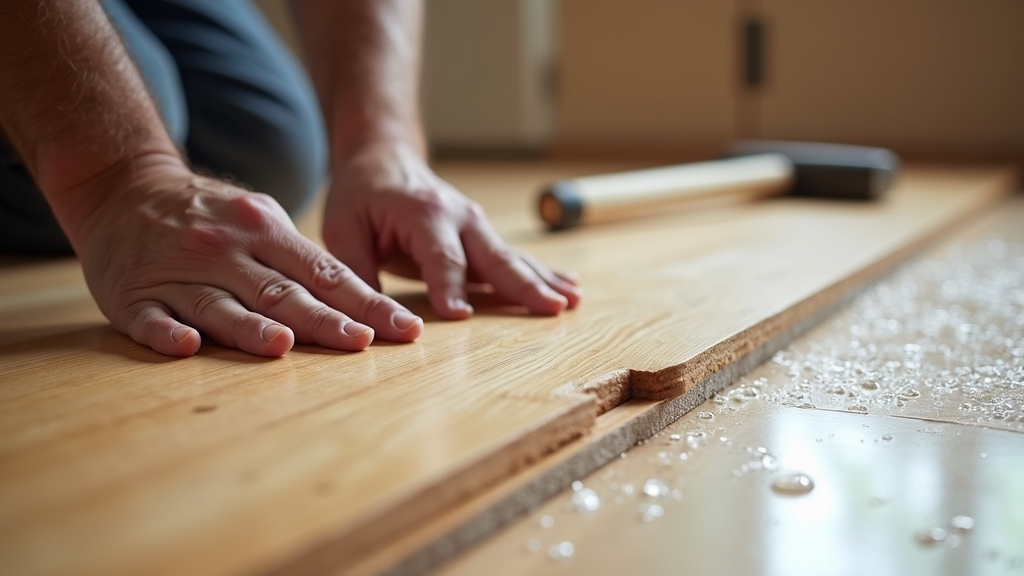
Applying high-quality finishes and sealants improves your waterproof hardwood floors, but proper installation techniques play an equally important role in preventing moisture infiltration.
Start with a clean, dry, and flat subfloor, ensuring moisture levels meet recommended limits. Lay a vapor barrier beneath plywood subfloors and install two staggered 5/8″ plywood layers glued and stapled to maintain a stable floating foundation.
The subfloor must also be structurally sound and meet local building codes to ensure durability and warranty compliance subfloor requirements. Proper climate control and maintaining consistent indoor humidity further protect the floor from moisture-related damage.
Use the floating installation method, locking planks tightly with tongue-and-groove edges and angle-angle click systems while maintaining 1/4″ to 1/2″ expansion gaps around perimeter walls. Glue-assist the first three rows using polyurethane adhesive for enhanced stability, fastening them mechanically to prevent shifting.
Stagger end joints 6–8 inches and secure moldings to seal edges, effectively reducing potential moisture entry points and preserving floor integrity. This careful sealing complements the engineered hardwood’s vulnerability and improves overall moisture resistance.
Preparing and Refinishing Hardwood Floors for Moisture Protection
Before refinishing your hardwood floors to enhance moisture protection, you need to thoroughly clean and prepare the surface.
Begin by sweeping and vacuuming to remove all dirt and dust. Sand the floor evenly with medium-grit sandpaper to create a textured surface for sealant adhesion and remove imperfections. Regular sweeping or vacuuming maintains the floor’s appearance and longevity, avoiding up to 80% of potential damage from abrasive particles.
Start by thoroughly sweeping and vacuuming, then sand evenly with medium-grit paper for better sealant adhesion.
Follow with fine-grit sanding to smooth scratches and then remove all sanding dust completely. Since traditional hardwood floors are not waterproof, it is crucial to apply proper sealing to prevent water damage.
If working with porous woods like pine, apply a wood conditioner for uniform sealer absorption. Use compatible water-resistant sealants; polyurethane or oil-based finishes work well to boost moisture resistance.
Apply multiple thin coats with smooth strokes along the grain, paying close attention to edges and corners. Allow full drying time between coats and avoid foot traffic until curing completes to ensure a durable moisture barrier. Proper drying prevents warping, buckling, streaks, and helps maintain the floor’s shine.
Best Practices for Maintaining Waterproof Hardwood Flooring
When you maintain waterproof hardwood flooring, adopting a consistent cleaning routine is essential to preserve its durability and moisture resistance.
Sweep or vacuum daily with soft tools, mop weekly with a damp microfiber, and avoid harsh chemicals. Promptly wipe spills without rubbing to prevent stains. It is also important to avoid walking on floors with high heels or sharp objects that can damage the surface.
Using Swiffer Sweeper dry cloths can also help efficiently trap dust and dirt without adding moisture. Use manufacturer-approved cleaners and keep humidity between 35%-55% to avoid warping.
| Task | Best Practice |
|---|---|
| Cleaning | Microfiber mop, pH-neutral cleaner |
| Spill Management | Blot spills immediately, avoid standing water |
| Prevention | Use rugs, felt pads, avoid dragging furniture |
| Monitoring | Inspect seams, clean edges, control humidity |
Frequently Asked Questions
Can Waterproof Hardwood Floors Be Installed Over Radiant Heating Systems?
Yes, you can install waterproof hardwood floors over radiant heating systems, but keep in mind that true waterproof solid hardwood doesn’t exist.
Only engineered hardwood with water-resistant finishes qualifies. You’ll want to choose engineered wood designed for radiant heat, maintain proper acclimation and humidity (35–55%), and floor temperature below 27°C.
Always follow manufacturer guidelines and use a moisture barrier to protect the system and flooring. Professional installation ensures ideal performance and warranty compliance.
How Do Waterproof Hardwood Floors Compare in Cost to Traditional Hardwood?
Imagine the sleek surface of waterproof hardwood flooring shimmering, yet costing more than traditional hardwood. You’ll find waterproof engineered hardwood priced higher due to advanced coatings, typically $4.50 to $16 per square foot versus solid hardwood’s $5 to $28.
Installation costs rise too, as waterproof floors demand precise conditions and skilled labor. While solid hardwood is pricier upfront and labor-intensive, waterproof variants offer moisture resistance worth the premium in damp areas.
Are Waterproof Hardwood Floors Environmentally Friendly or Sustainable?
Yes, waterproof hardwood floors can be environmentally friendly if you choose options with low-VOC water-based finishes and FSC-certified wood. You’ll want to look for products using recycled or sustainably harvested materials and non-toxic coatings.
These floors last longer, reducing waste and resource use. Plus, proper disposal and certifications like GreenGuard Gold guarantee minimal indoor pollution and environmental impact, helping you maintain a healthier home and a smaller ecological footprint.
Can Waterproof Hardwood Floors Be Sanded and Refinished Multiple Times?
You can sand and refinish waterproof hardwood floors, but only 1-2 times safely. Since these floors are usually engineered with thin wear layers, sanding beyond that risks exposing the core and ruining the floor.
Always check the wear layer thickness before refinishing. For best results, hire professionals who’ll remove minimal material and reapply protective coatings carefully to maintain waterproof qualities without compromising structural integrity.
What Warranties Typically Cover Water Damage on Waterproof Hardwood Floors?
Warranties typically cover manufacturing defects, surface swelling, cupping, warping, and finish wear-through caused by normal moisture exposure. They guarantee resistance to everyday spills, surface water exposure for limited hours, and wear layer durability under normal foot traffic.
However, they exclude flooding, standing water, plumbing leaks, and improper maintenance. You must follow installation guidelines, maintain humidity control, and report issues promptly to keep your waterproof hardwood floor warranty valid.
Moisture-Proof Magic: Invest in Sealants That Keep Water Out
Waterproofing your hardwood floors is like building a fortress against moisture. Each layer, from sealants to installation techniques, acts as a vital defense. By understanding the wood’s composition, applying effective finishes, and maintaining the surface regularly, you guarantee lasting protection and durability.
Follow these precise steps to keep your floors resilient, preventing water damage and preserving their beauty over time. Your waterproof hardwood floor will stand strong, no matter the conditions.


